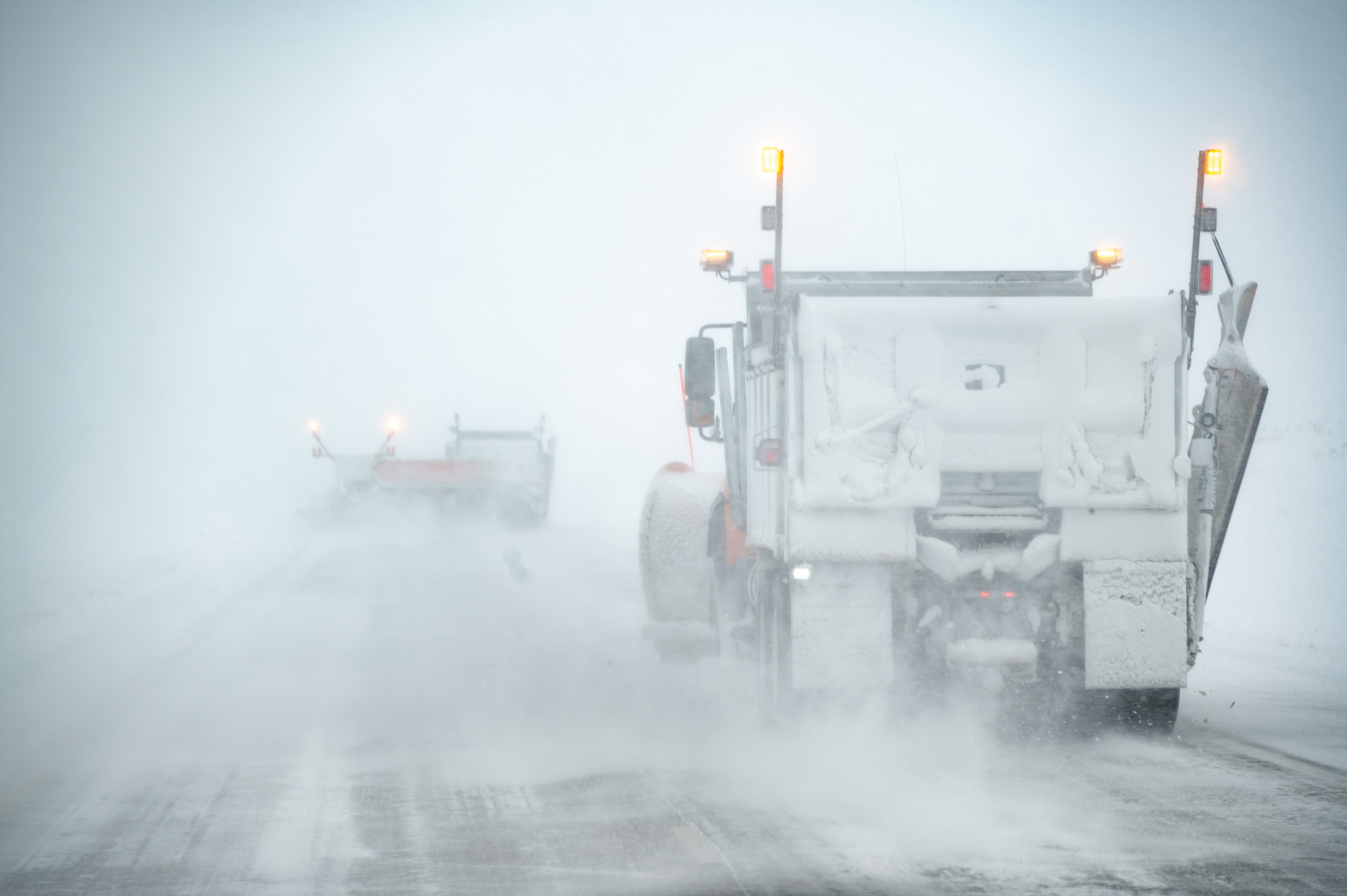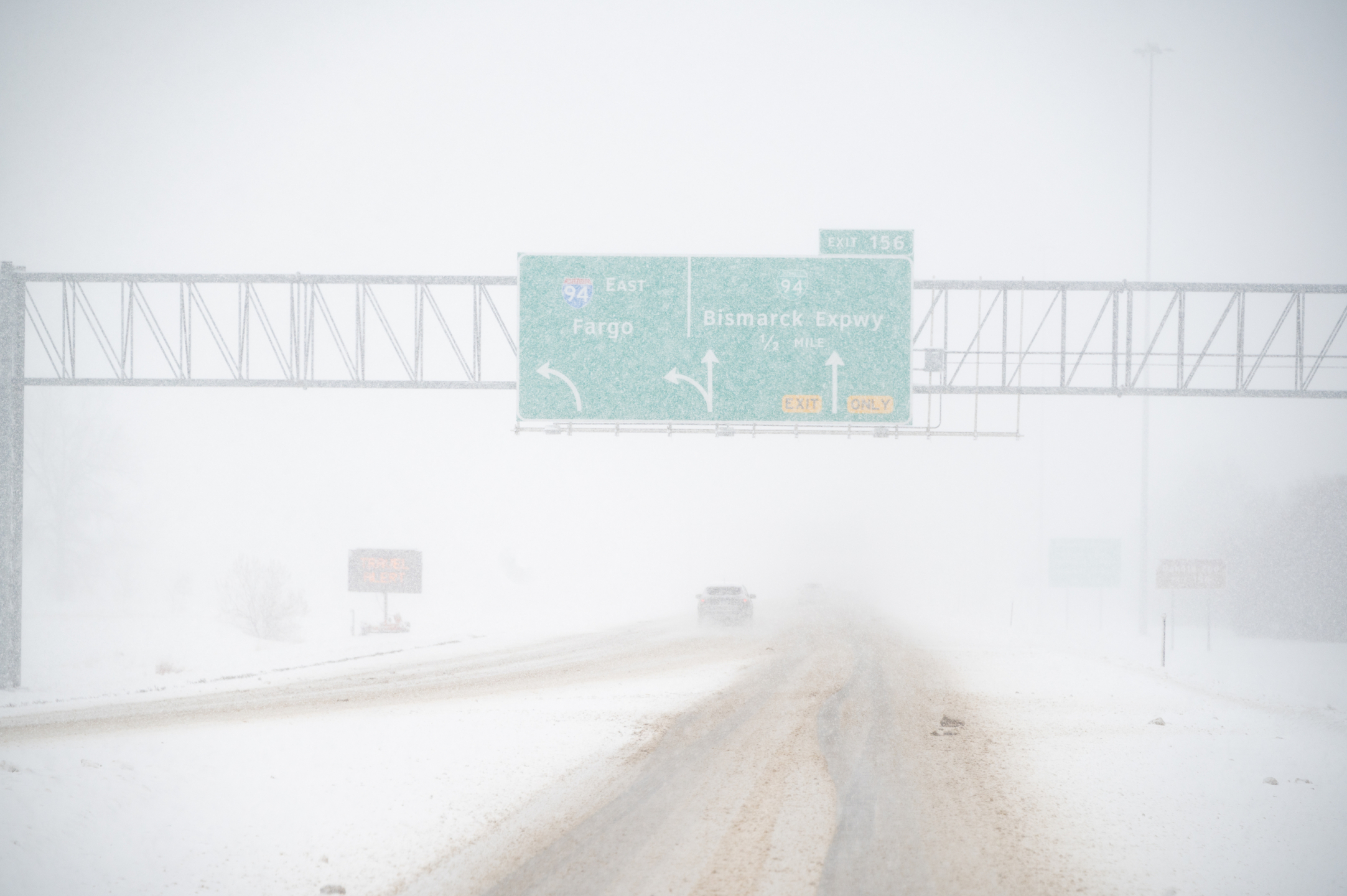Road Condition Information
Access to most recent road conditions, load restrictions, work zones, weather cameras, width/height restrictions and weather radar.
Disclaimer
The travel Information is based upon reports available to the North Dakota Department of Transportation at the time of preparation and are provided solely as a public service. Actual conditions may vary from those reported. Motorists are cautioned to be alert to changing conditions.
Summer Travel Information maps are updated once daily or as conditions warrant, typically from mid-April through October.

Winter Travel
Road Condition Terminology
The following terms will be used to relate to winter road conditions, to maintain consistency, and keep the traveling public well informed. The NDDOT will utilize these terms to inform the public about road conditions that warrant increased awareness.
Travel Alert
Motorists can still travel but may encounter areas of challenging winter weather driving conditions on roadways. Motorists should allow extra time to reach their destination and be alert to conditions that may make travel difficult, change rapidly, or cause travel delays. A travel alert has the potential to change to a no travel advised if conditions deteriorate.
No Travel Advised
Motorists should not travel due to hazardous conditions which may make it unsafe to travel. Snow plows may be pulled from the roads during severe conditions. Motorists should take no travel advised seriously as those motorists who choose to travel at their own risk may become stranded and emergency responders may not be able to reach them safely. A no travel advised has the potential to change to a road closed or blocked if conditions deteriorate.
Roads Closed or Blocked
Motorists are not allowed to travel on a closed road due to life threatening conditions. The road may be impassible or blocked. Motorists who drive past a road closure device may be fined up to $250.
Road Weather Information System (RWIS)
Have you ever noticed equipment next to a highway, which looked like a small weather station, and wondered about its purpose?
These “weather stations” are called environmental sensor stations (ESS). A network of ESS make up a Road Weather Information System (RWIS). The North Dakota Department of Transportation (NDDOT) is one of many state DOT’s across the country which utilizes RWIS as a tool to obtain road weather information and aid in decision making.
An ESS contains sensors which measure atmospheric and pavement conditions at locations across North Dakota. Here are some examples of data which can be obtained from ESS:
Atmospheric data
- Air temperature
- Relative humidity
- Visibility distance
- Wind speed and direction
- Precipitation type and rate
- Radiation
- Barometric pressure
Pavement data
- Pavement temperature
- Pavement condition (Ex: wet, icy)
- Pavement friction
- Pavement images
- Subsurface temperature

ESS State Summary and Map
Environmental sensor stations are also available for public use. Road Weather Information System - GIS View ESS will appear as triangles on the RWIS map.
